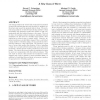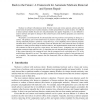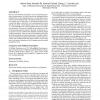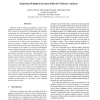20 search results - page 4 / 4 » Trojan horse attacks on software for electronic signatures |
WORM
2003
13 years 6 months ago
2003
The damage inflicted by viruses and worms has been limited because the payloads that are most lucrative to malware authors have also posed the greatest risks to them. The problem...
ANCS
2006
ACM
13 years 11 months ago
2006
ACM
The fast spreading worm is becoming one of the most serious threats to today’s networked information systems. A fast spreading worm could infect hundreds of thousands of hosts w...
ACSAC
2006
IEEE
13 years 11 months ago
2006
IEEE
Malware is software with malicious intent. Besides viruses and worms, spyware, adware, and other newer forms of malware have recently emerged as widely-spread threats to system se...
SOSP
2005
ACM
14 years 2 months ago
2005
ACM
Recovery from intrusions is typically a very time-consuming operation in current systems. At a time when the cost of human resources dominates the cost of computing resources, we ...
SP
2007
IEEE
13 years 11 months ago
2007
IEEE
Malicious code (or malware) is defined as software that fulfills the deliberately harmful intent of an attacker. Malware analysis is the process of determining the behavior and ...




